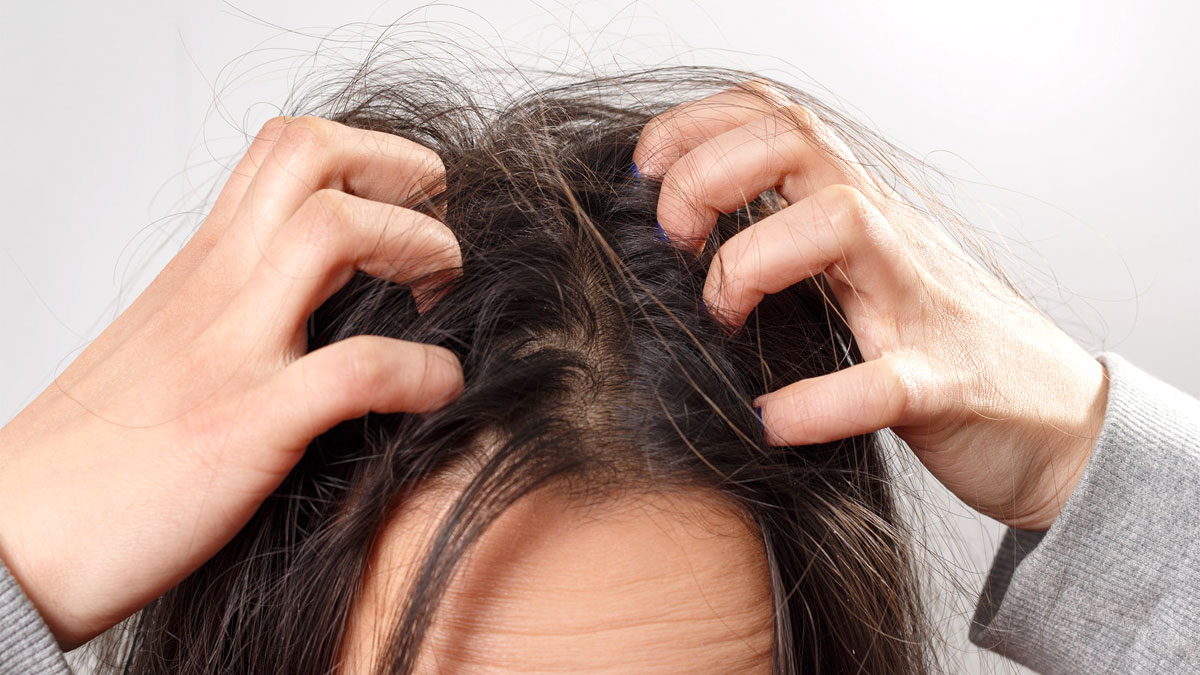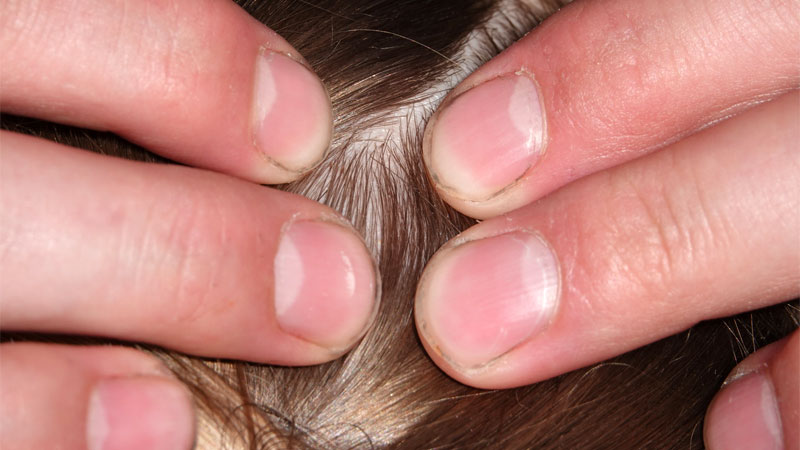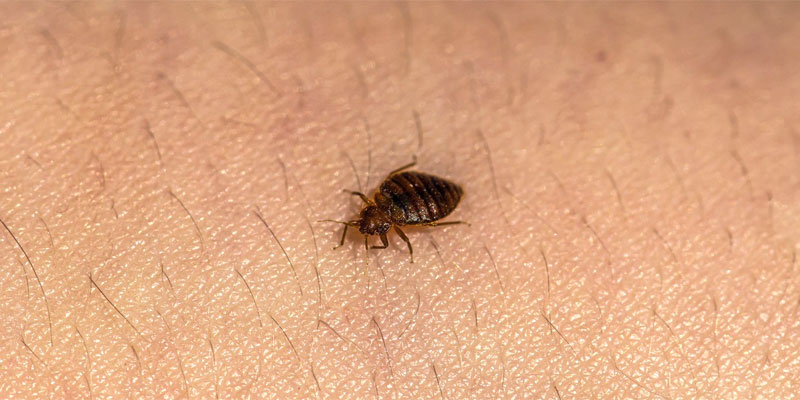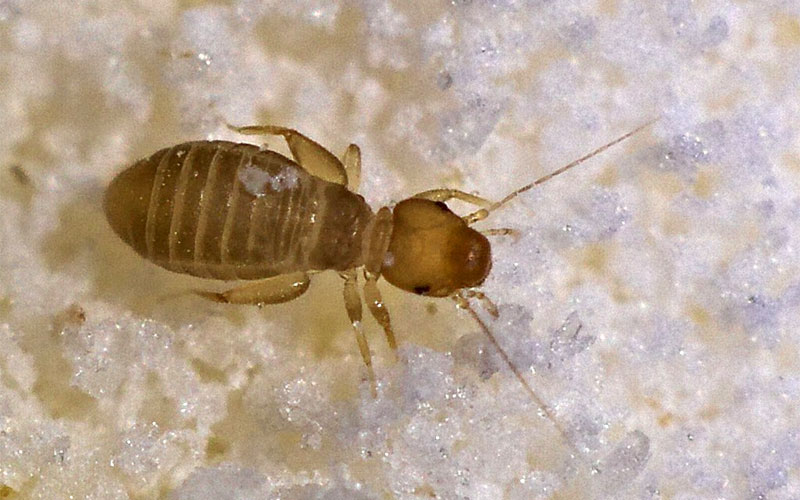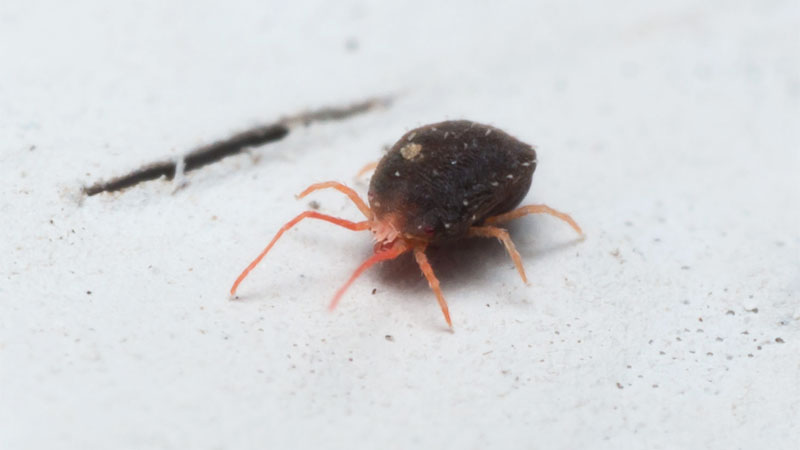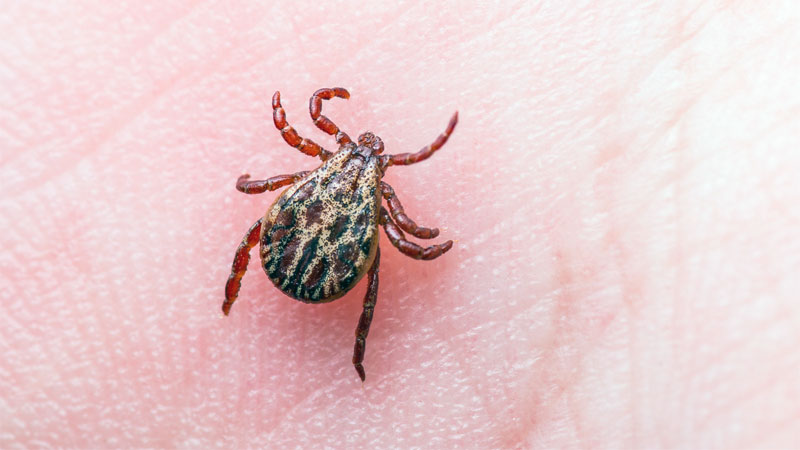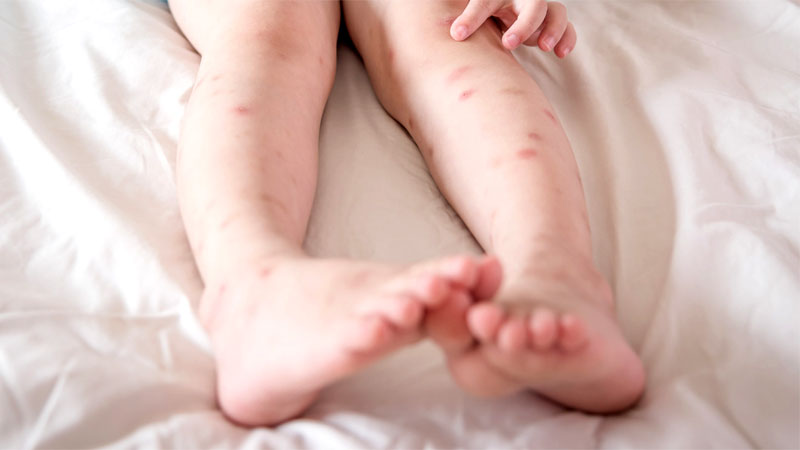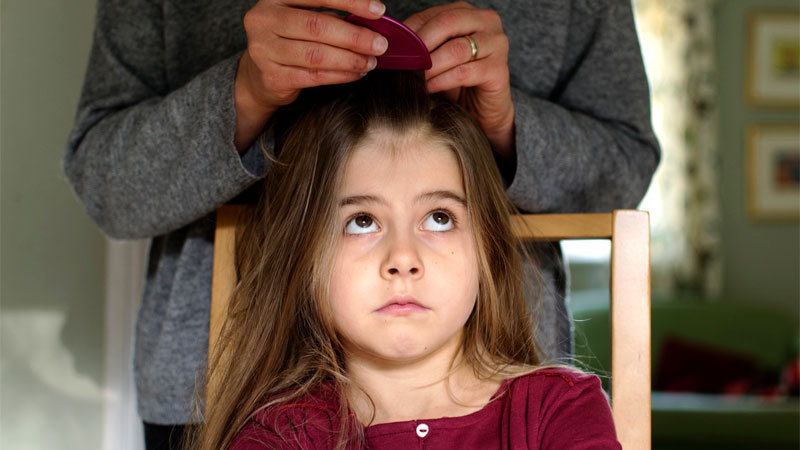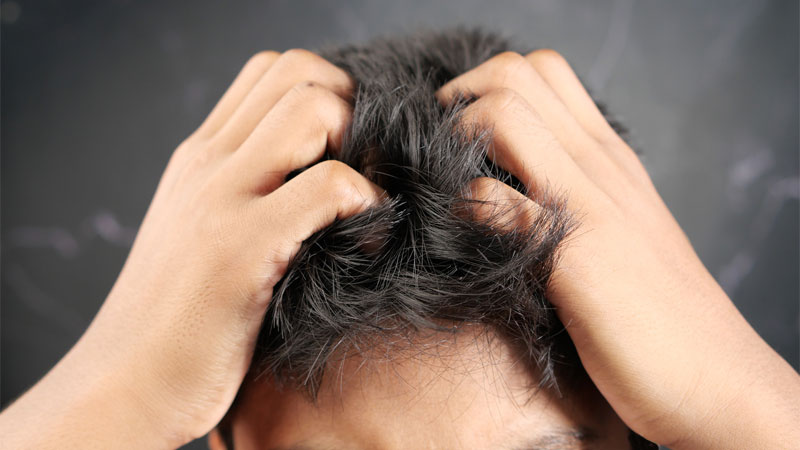In the pest world, one hears a lot of old wives’ tales about common critters that encourage a feeling of paranoia. Today, we’re going to look at one of the scariest of these critters: the blood-sucking flea.
We all know bed bugs feed on human blood, but there’s a big debate on whether fleas will attack humans. Do they really only feed on animals? And can fleas live on humans or in your bed when there are no pets around?
Can Fleas Live in Human Hair?
We’ve heard this question many times, and in almost every case, there is either an outright denial or a “safe”, noncommittal answer. In fact, fleas seem to be one of those critters that even the professionals don’t like to talk about. But when it comes to fleas in human hair, it seems there’s an especially large divide between the “cans” and “cannots”.
So let’s start with the most important counter question to that of fleas in hair. Then we’ll break things down to examine all of the facts.
Note: For those who always skip to the last page in mystery novels, the answer is: yes, fleas can live in human hair, but not for long with one exception.
Is It Really a Flea?
This is the ultimate question of every skeptic, “Are you sure that’s what you saw/heard?”
Sometimes this question plants a seed of doubt. After all, you’re dealing with something as small as a sesame seed. Thus, those suspected flea infestations could be something else entirely. Right?
Say what you will, this question also has a scientific basis, and in the world of pests, it’s often easy to blame the wrong critter. But sometimes you really are seeing adult fleas, and that’s why it’s important to rule out imposters.
Here are some bugs often confused with fleas and how they are different.
Bed Bugs
Bed bugs are vertically flat and rounded, while fleas are more oval and are flattened on the sides. Like fleas, they drink blood, but their bites are different. They aren’t very good at climbing under clothes or gripping the skin, so they’ll leave a trail of bite marks where your movements have dislodged them during the night.
Bed bugs are also unable to jump, which is one of the easiest differences to spot. Due to their poor grip, these critters prefer to attack exposed skin and it’s pretty rare for them to attack the scalp (if you have hair there, that is).
Lice
Like bed bugs, lice prefer human blood meals, but these little nasties actually live on the host.
There are several different species, often named after the portion of the body they prefer, such as head lice, body lice, and pubic lice. They have a more oval abdomen and distinctive head. Lice are also not known to jump as high as fleas.
Mites
One of the most common kinds of indoor arachnid, mites can be bigger than bed bugs or so small they’re almost impossible to spot with the naked eye.
Their bodies are rounded and they’re actually decomposers, feeding on shed skin cells or similar waste. However, there are times these critters can get over-enthusiastic and bite you in t he middle of a meal.
Ticks
Ticks are yet another arachnid pest that prefers to live almost exclusively outdoors. They have a similar body shape to bed bugs but are much better at keeping a grip.
In fact, they can remain attached to their victim for several days, leaving behind a red lump that can blister or bruise and lasts for a couple weeks. They much prefer other animals over humans, but won’t turn down a good blood meal when they sense one.
As for the Flea…
Fleas are very good at remaining on their host and can skitter across skin or navigate fur like a pro. Their bites leave small, itchy bumps that are surrounded by a red halo.
Related: Flea Bites on Kids (Identification and How to Treat)
These bites are most often found on the legs and feet, but this isn’t always the case. Also, unlike all of the critters we’ve just covered, all fleas have a vertical, seed-shaped body.
They can also be identified by the frass they leave behind (referred to as flea dirt).
The Myth of Fleas and Humans
And now we come to the part that most other pest sites are usually unwilling to discuss – the relationship between humans and fleas.
Any person who has pets and dealt with these tiny vampires will know that they can and do bite humans. Despite this common knowledge, the old wives’ tale that fleas only attack pets remains prevalent in many professional circles. However, this claim is actually a result of incomplete information.
Another myth is that fleas can’t live on humans. Again, this is a myth based on partial information.
Here at RMC, we pride ourselves in giving out the most accurate information possible, and when you point out a mistake, we actually go and fact check ourselves using the information you provide. If we’re wrong, we admit it.
And it’s this attention to detail that allows us to boldly say that the above claims are wrong because there are actually…
Related: Can Rubbing Alcohol Eliminate Fleas?
Different Kinds of Fleas for Different Hosts
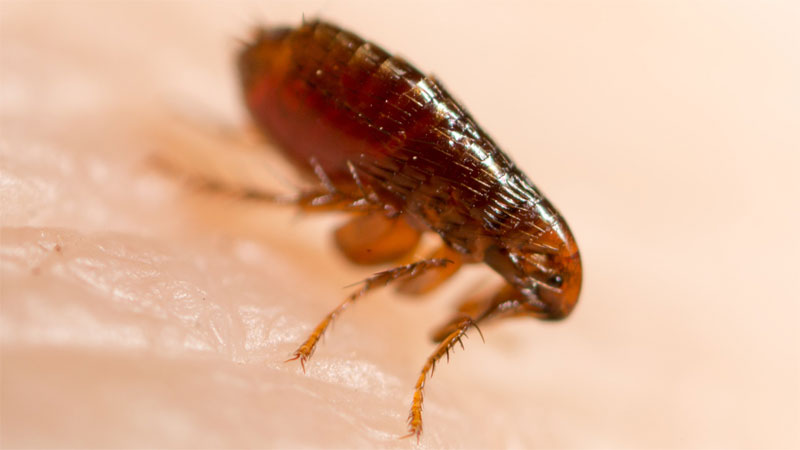
We won’t get into too much depth about different types of fleas here. However, we do need to touch upon three of them, because this is where people get things wrong.
They say the devil is in the details, and the biggest mistake most websites and non-academic sources (and, let’s be honest, even some sources claiming to be academic) make is to only discuss a single species of flea.
Cat Flea
The first of these is the cat flea (Ctenocephalides felis), a flea so common that just about every website out there is discussing this very species when they talk about fleas.
Cat fleas prefer cats (obviously) but will attack dogs and other pets. They will also attack humans under certain circumstances.
Dog Flea
The second is the dog flea (Ctenocephalides canis), a species that looks very similar to cat fleas but prefers dogs over cats.
These are almost as common as the cat flea, leading a lot of sources to mistakenly believe the two are one and the same species. Dog fleas will also attack humans under certain circumstances.
Humans, cats, and dogs all have very different blood contents, so a cat flea will see cats as a sirloin steak with all the trimmings and humans as a piece of wilted iceberg lettuce.
A human will normally think eating out of the trash is disgusting, but miss a few meals and suddenly it doesn’t matter. The same is true of fleas.
If a cat flea isn’t near a cat, it will seek out the nearest source of blood. This often means humans. And yes, they can stick around on a human or your bedding in the hopes they’ll be transported to their preferred food.
Human Flea
The third type is the human flea (Pulex irritans), formerly known as the house flea. This species prefers humans over furry mammals and sees patches of human hair to be the perfect shelter.
As with other species, the human flea is adapted for the blood of their host and can only gather the proper nutrients for reproduction from that host. However, also like other fleas, the human flea will feed on other critters when humans aren’t available.
So Do Fleas Live in Human Hair? Assembling the Evidence
When talking about species that are adapted for living and breeding on a specific host, that flea will tend to spend its entire live on that preferred host. However, there are times when the flea becomes dislodged. They’ll feed on a different critter while waiting for a chance to return to their preferred host.
A hungry flea will bite humans on the legs or feet (unless the human is sitting or laying down). Usually, this is only one or two times before jumping ship.
How Common are Fleas in Human Hair?
With the exception of human fleas, all species find human hair to be more difficult to take shelter in. This is compounded by the fact that human blood lacks the nutrients they need to reproduce.
Thus, most fleas can hide in human hair, but they will try to leave at the first sign of a more viable host.
These other are most likely to infest your hair if the infestation in your home is so severe that food is sparse. They’re also more likely to stick around in your hair if you aren’t grooming regularly.
How to Get Fleas Out of Human Hair
In the event you find these critters making a meal of your scalp, it’s a good idea to get rid of them. After all, they’re either there to lay flea eggs or are hitching a lift to get at your pets.
The good news is, it’s pretty easy to dislodge fleas through simple, good hygiene. A thorough shampooing can remove a lot of them, knocking them into the water and down the drain. Consider using shampoos that contain tea tree oil.
Other popular home remedies for shampooing are apple cider vinegar or Dawn dish liquid. Stick on a shower cap and allow the product to sit for 15 and 30 minutes, respectively, before rinsing. You may wish to follow up the vinegar with something else so you don’t smell like a salad. Also, note that the Dawn will strip your hair of oils, so be sure to use a moisturizing conditioner.
You can also use a fine-toothed comb such as a lice comb to force the pests and their eggs out.
Related: How Much Do Flea Exterminators Cost?
The Final Verdict
So can fleas live in human hair? Yes, although human fleas are the only species that will stick around.
What increases the risk of fleas in your hair? Poor hygiene and/or major infestations will greatly increase the risk. However, fleas may briefly hitch a ride in your hair while looking for their preferred food.
Can fleas survive in human hair for an extended period of time? Yes, but outside of human fleas, human blood lacks the exact nutrition a flea needs to breed, meaning they can’t lay any eggs.
- How to Get Rid of Hawks - March 8, 2024
- How to Get Rid of Pill Bugs (Rolly Pollies) - March 1, 2024
- How to Get Rid of Groundhogs (Woodchucks) - February 5, 2024

